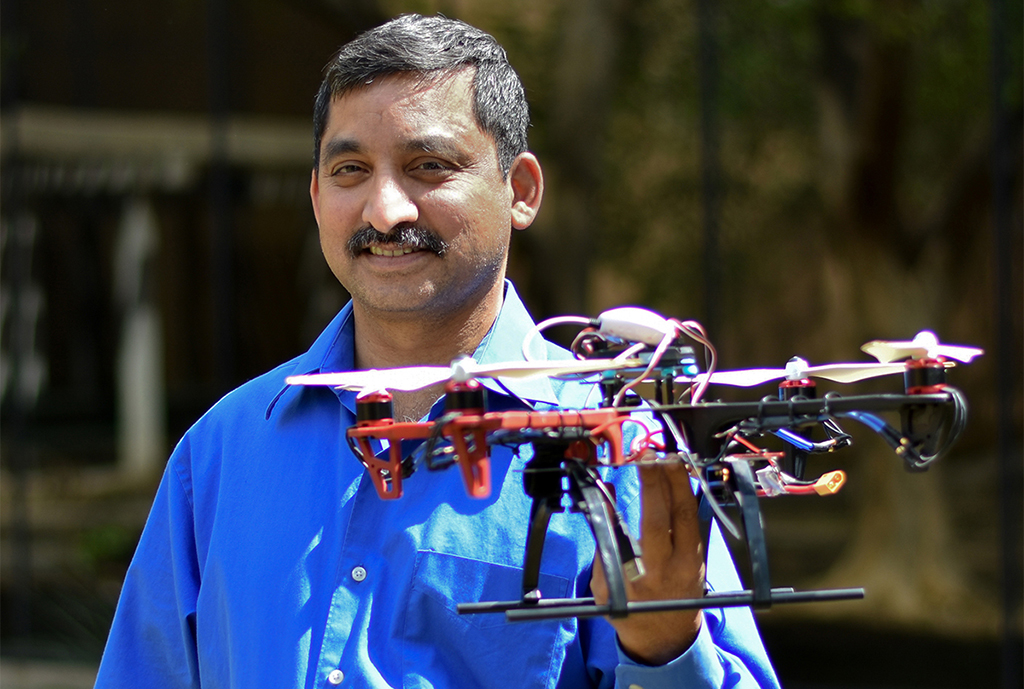 UNT researchers from the College of Engineering are working on safer and more efficient
ways to move people and cargo as the demand for using unmanned air vehicles (UAVs)
in urban, suburban, and rural areas continues to grow.
UNT researchers from the College of Engineering are working on safer and more efficient
ways to move people and cargo as the demand for using unmanned air vehicles (UAVs)
in urban, suburban, and rural areas continues to grow.
Electrical Engineering Professor Kamesh Namuduri is collaborating with Hermes Autonomous Air Mobility Solutions Corporation to develop an airspace hazard identification and alerting service (AHAS) for advanced air mobility applications.
Focusing on weather and obstruction hazards as well as communication dead zones, the cloud-based system will alert the UAV so it can adapt and respond accordingly for temporary or permanent changes in real-time.
“One of the most predominant challenges being discussed right now is this whole idea of transporting physical goods over spaces on demand and at a higher scale than is currently being done,” said Rajendra Penna, president of Hermes Autonomous Air Mobility Solutions Corporation. “Getting around hazards and ensuring there is a kind of efficiency and accuracy to the entire delivery process is key. Drones are really going to become a reality.”
The team has received seed funding from the North Texas Center for Mobility Technologies with support from the North Central Texas Council of Governments and plans to have the product developed and deployed commercially by the end of 2022.
The project also is part of NASA’s Advanced Air Mobility National Campaign – a collaboration that began in early 2020 and is now progressing to the next phase: flight demonstrations during 2022. UNT is leading a team of nine organizations, including Bell Textron, Inc.; Unmanned Experts, Inc.; Frequentis USA, Inc.; The Center for Collaborative Adaptive Sensing of the Atmosphere at University of Massachusetts, Amherst; ResilienX, Inc.; OneSky; Hermes Autonomous Air Mobility Solutions Corporation; and Lone Star UAS Center of Excellence at Texas A&M University, Corpus Christi as part of the infrastructure annex.
“Ultimately, our goal as partners of NASA’s Advanced Air Mobility National Campaign is to make unmanned air transportation safer and more efficient for people and communities. There’s no doubt that the use of drones will continue to grow,” said Namuduri. “This is the future, and it’s truly very exciting to be part of it.”